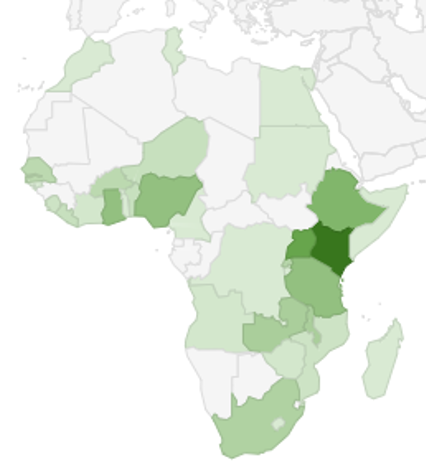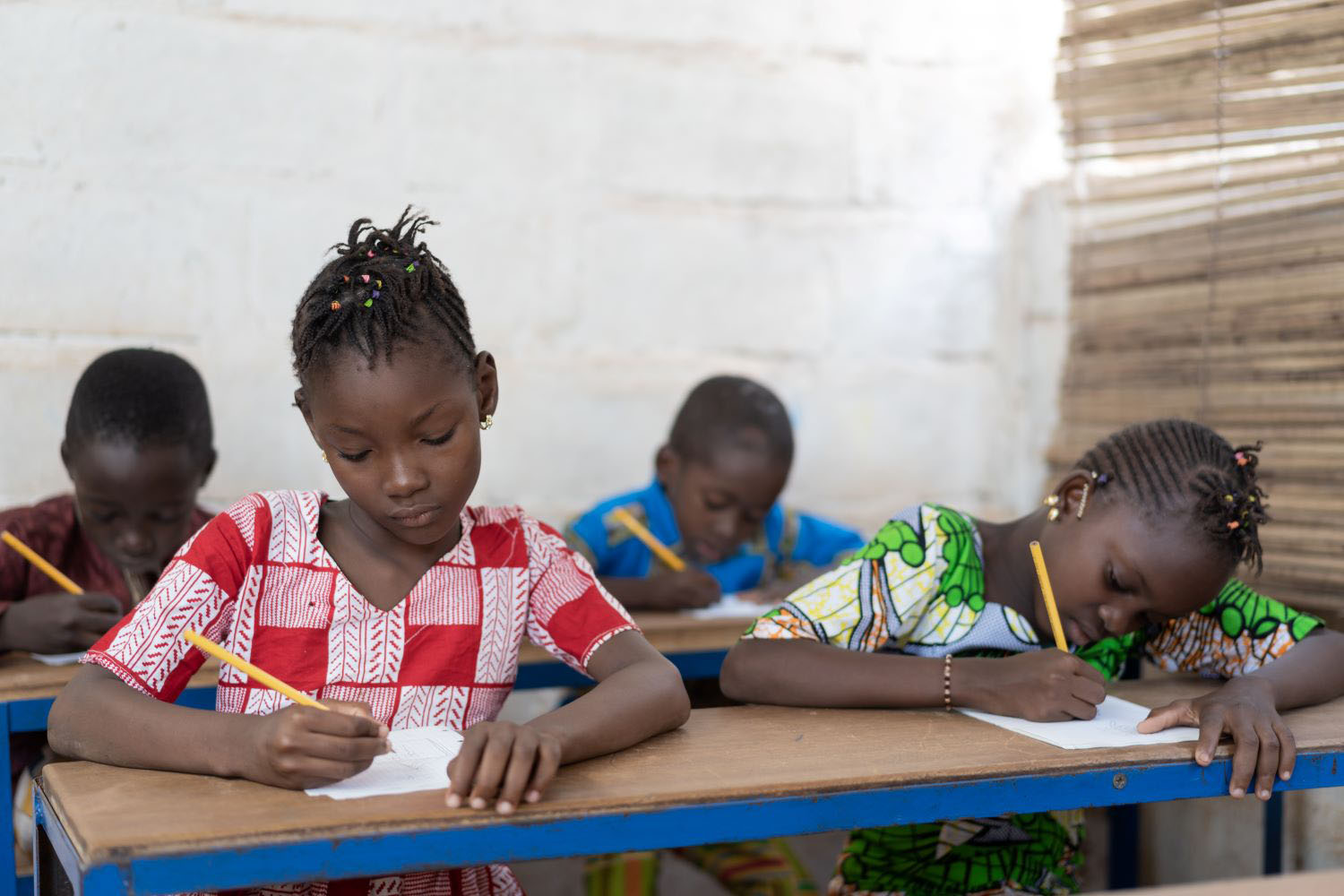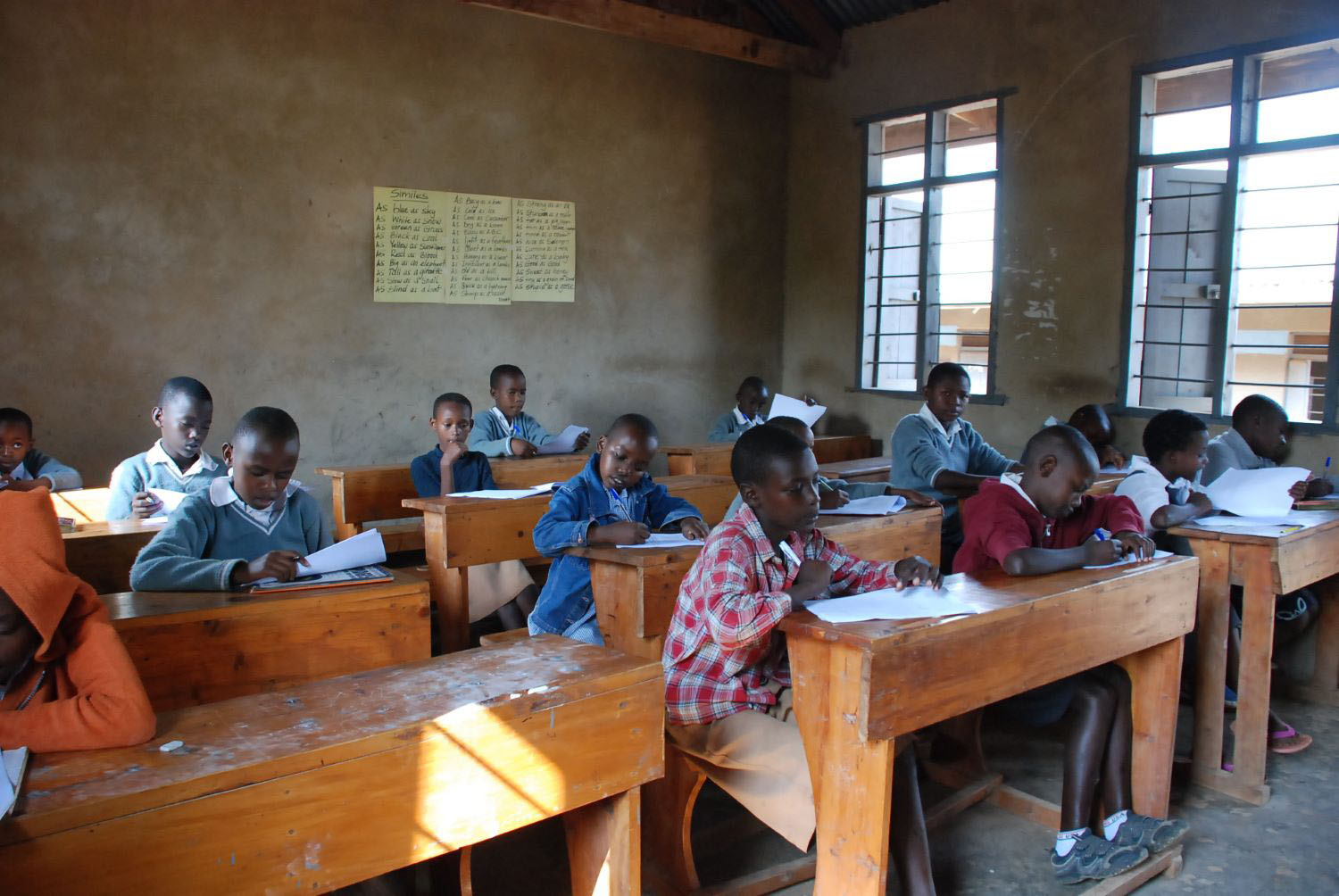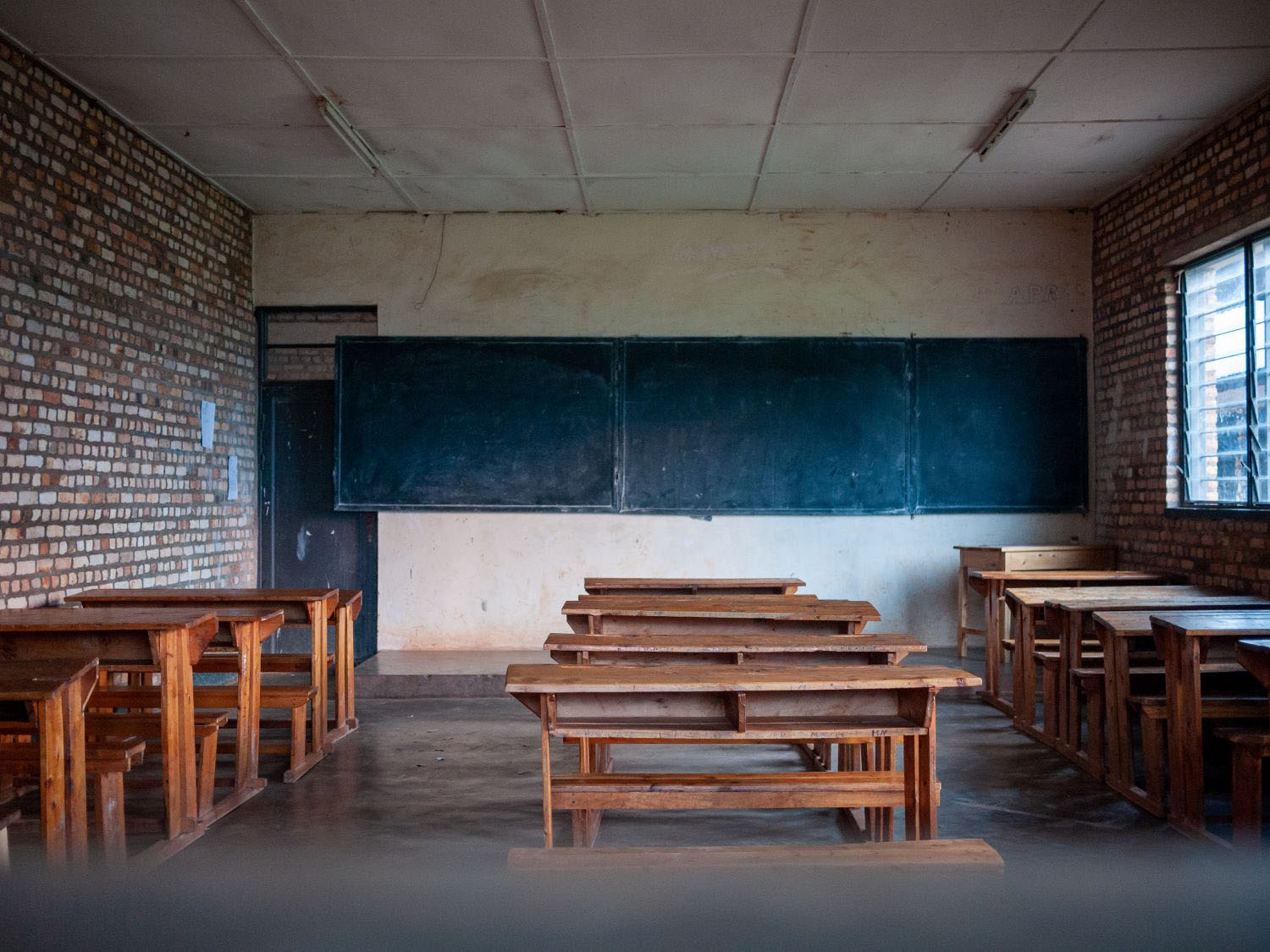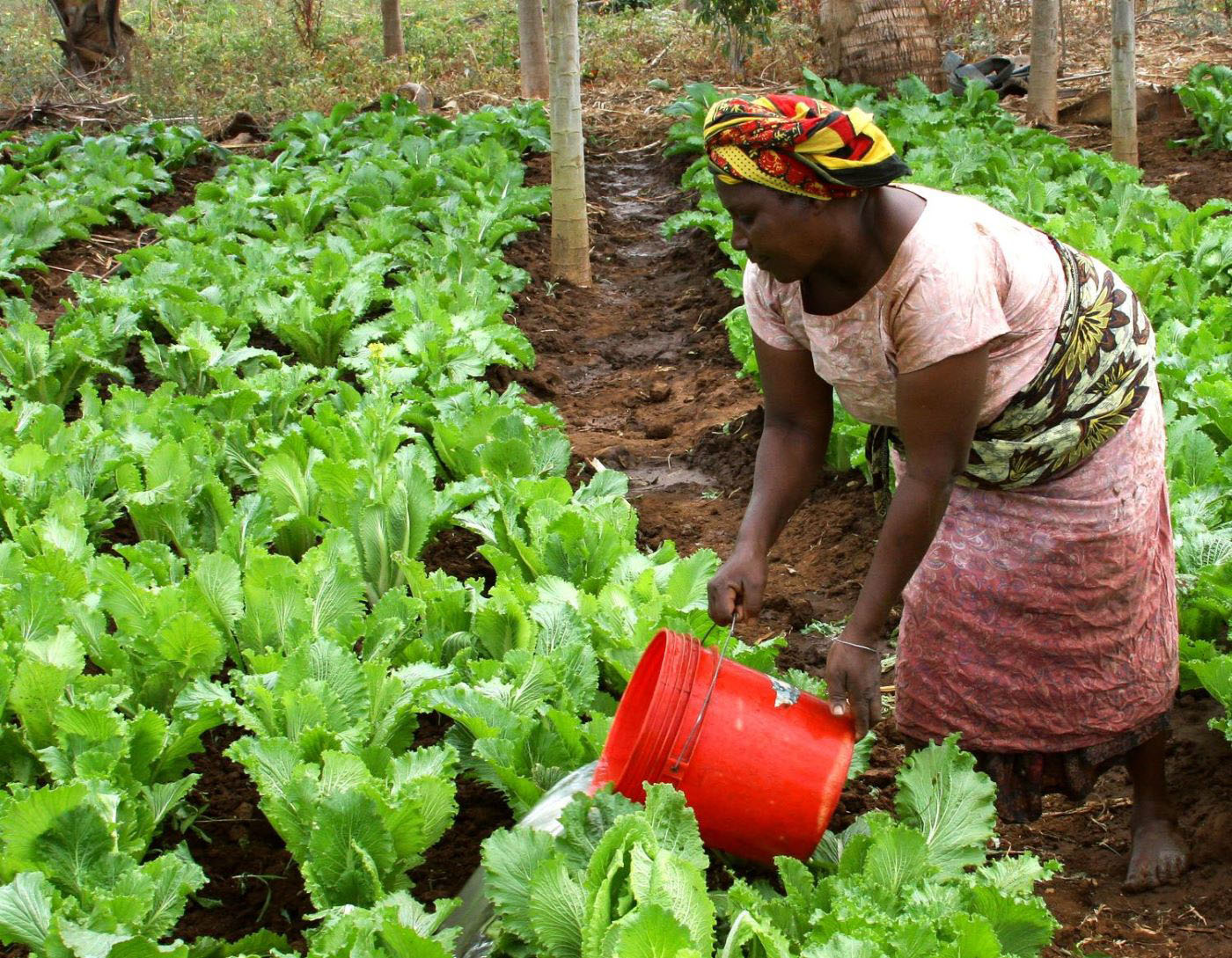Recommended

WORKING PAPERS
With a constant stream of new studies emerging on how to expand access or improve learning in education, it can be hard to keep track and make sense of it all. In our new paper—“Education in Africa: What Are We Learning?”—we curate more than 140 evaluations of education interventions, from national policies to small pilots, in African countries that came out between 2014 and, well, the latest studies we could find. Most studies come from primary schools, about a quarter more are from secondary schools, and others are from pre-primary or post-secondary education. The studies come from around the continent, authored by a mix of local and international researchers (Figure 1).
Figure 1. Distribution of identified education studies (2014-2020) across countries in Africa.
Darker shades of green indicate more studies. Countries with the most studies: Kenya (41 studies), Uganda (21), Ethiopia (17), Ghana (15), Nigeria (13), and Tanzania (13).
We complement those evaluations with dozens of descriptive studies. We examine new patterns both in the design of studies and in the results. Here’s what we learned.
What does the current generation of education impact evaluations in Africa look like?
Almost a fifth of the studies in our sample evaluate national policies. In addition to those, 35 percent of studies examine multiple treatment arms, going beyond the question of “what works” to try and answer the question “what works best.” Multi-arm evaluations can better inform policymakers on the right mix of interventions or help them choose—from a range of competing interventions—which to invest in.
Most of the studies examine interventions implemented by government partners: beyond the 19 percent evaluating national policies, another 46 percent evaluated smaller-scale programs implemented by government agencies. Other programs were implemented with private partners, non-government organizations, or directly by researchers. Outside of the national policies, the scale of programs is often relatively small. For studies that report schools as their main treatment, the median number of schools that benefit from an intervention is 66. That isn’t necessarily a bad thing: governments may wisely evaluate pilots before making decisions about scaling up. But it does affect how applicable those results may be at a national scale.
What do these evaluations teach us about education?
About five years ago, there were a series of studies synthesizing evidence from education in development. There was even a synthesis of the syntheses! As we went through these new papers, we looked especially for places where new evidence shone a light on areas little discussed in previous reviews. Spoiler alert: our review does not yield a single recommendation for what countries should do to transform their education systems. Results will vary across contexts, and countries considering adapting a successful program from one place to another should think carefully about whether the same challenges apply, whether they’d expect people to respond in the same way to the program, and whether the program could be implemented well in the new context, as Bates and Glennerster explain. But successful programs in one setting can be useful starting points for policy discussions in other settings, and programs that have been successful in multiple other contexts provide all the more optimism.
Here’s a quick round-up of the array of topics on which we find new evidence and some of the new findings.
-
Mother tongue instruction (i.e., teaching children in a language they already speak when they arrive at school): This topic goes largely undiscussed in earlier reviews of evidence in the region, but recent studies have shown positive impacts on the speed of children learning to read, mostly positive impacts on subsequent learning to read in another language, and even some long term impacts on total educational attainment.
-
Multi-faceted pedagogical support programs – commonly referred to as “structured pedagogy” programs: These programs usually combine teacher training, teacher lesson guides, learning materials for students, and sometimes mother tongue instruction. Recent studies in both Kenya and Uganda shows that these programs can be effective, including at scale.
-
Teacher pay for performance: Recent studies suggest that teacher performance pay may work best when other conditions are in place, such as when schools also receive grants or when students have access to textbooks. They also suggest that not all performance pay programs are created equal, and some designs will work better than others. One study, in Rwanda, shows favorable impacts of performance pay on recruitment and on teacher effort.
-
Teacher support and professional development: Countries continue to seek the right mix of supports to help teachers be maximally effective. In Ghana, training teaching assistants from the national youth employment program to work with students who had fallen behind boosted learning. In South Africa, coaching teachers was twice as effective in the short run as a traditional professional development program and had more enduring impacts.
-
Education technology: As in other regions, edtech interventions continue to be a mixed bag. In Kenya, three alternative edtech interventions all boosted literacy learning, but none of them boosted learning more than a no-tech alternative, reminding us that learning gains from any program should prompt the question, “relative to what?” In South Africa, virtual teacher coaching showed promising initial results but those didn’t translate beyond the most basic skills. Other ed-tech interventions were more effective: e-readers in Nigeria, broadcast lessons in Ghana, or cinematic role models in Uganda. Some learning software packages worked and others didn’t.
-
School feeding programs: Highlighted in one earlier review, these programs lead to boosts in both students’ school attendance and in their performance in recent studies in both Ghana and Senegal. In Burkina Faso, providing take-home rations boosted attendance for boys and girls and enrollment for girls in particular.
-
School construction: With recent emphasis on learning rather than access, school construction sometimes gets a bad rap. But without schools, it’s difficult to imagine realizing learning gains. A new crop of studies from Burkina Faso and Niger show gains in both access and learning from school construction programs. Other studies in Benin and Zambia also showed gains.
-
School fee elimination: As more time has passed since most countries eliminated primary school fees, more studies are showing longer term impacts: decreased adolescent pregnancy in Ethiopia, Malawi, and Uganda, higher employment in Kenya, and reduced adolescent marriage in Ghana. These gains are particularly important to remember as countries continue to seek universal primary school completion. Secondary school is also expanding across the region, and we have a first generation of studies showing results in that area, in the Gambia, Ghana, Kenya, and Uganda.
-
Early child education: Earlier syntheses have little to say about early child development in Africa, mostly because most of the earlier evidence comes from other parts of the world. That’s changing. Randomized controlled trials, both on improving access to early child education (in Mozambique) and on improving quality (in the Gambia, Kenya, and Malawi) can deliver gains in child development. Other, quasi-experimental studies build the case that children who participate in early child education enjoy benefits in their later education careers.
-
Girls’ education: Many of the interventions we’ve discussed above benefit girls as well as boys, some of them differentially. For example, interventions to help teachers target their teaching to student learning levels in Ghana boosted learning for girls more than for boys, a reminder that non-targeted programs can sometimes be great investments for girls’ education. A recent crop of studies has examined targeted programs: providing bicycles to girls in Zambia or sanitary pads to girls in Kenya, both with at least some positive impacts.
Another set of studies add additional training and girls’ only spaces (i.e., a safe space where girls can hang out without boys) to the school experience—negotiation training in Zambia, mentoring in Liberia, and some form of skills training in Uganda, Sierra Leone, Tanzania, and Ethiopia. Most (but not all) of the results are positive: the Uganda results endured four years later. The Sierra Leone program mitigated many adverse social impacts of school closures during the 2014–2016 Ebola crisis.
-
Private schools: Many families use private schools across the African continent. Parents tend to perceive private schools as being of higher quality, although the limited empirical evidence tends to suggest comparable learning gains from public versus private schools in Kenya and management quality in Uganda. Public-private partnerships may boost the quality of private schools but the impact on test score is less clear. In Liberia, a public-private partnership yielded higher learning but at a much higher cost, and those gains did not compound over time.
In the paper, we also cover other topics for which there is recent evidence, including school grants, other inputs (like textbooks and solar-powered lamps). We also discuss many additional studies not mentioned above.
Takeaway
A growing body of evidence shows that a range of programs yield access and learning gains, and policymakers can draw from a wide menu from across the continent to implement improvements in their own education systems. In particular, the last five years have shown encouraging evidence in areas with previously little empirical evidence in Africa, including multi-faceted structured pedagogy programs, mother tongue instruction, school feeding, and early child development. The evidence has also grown richer in areas like teacher policies, private schooling, and education technology, where some interventions have been effective in some contexts and others have not.
Ultimately, the most effective investments in a country will depend on the particular obstacles that countries face and the tools available to overcome those obstacles. That said, it doesn’t hurt to learn from the successes and failures of your neighbors.
This blog post was updated in October 2020 to reflect minor updates in the paper.
Disclaimer
CGD blog posts reflect the views of the authors, drawing on prior research and experience in their areas of expertise. CGD is a nonpartisan, independent organization and does not take institutional positions.


